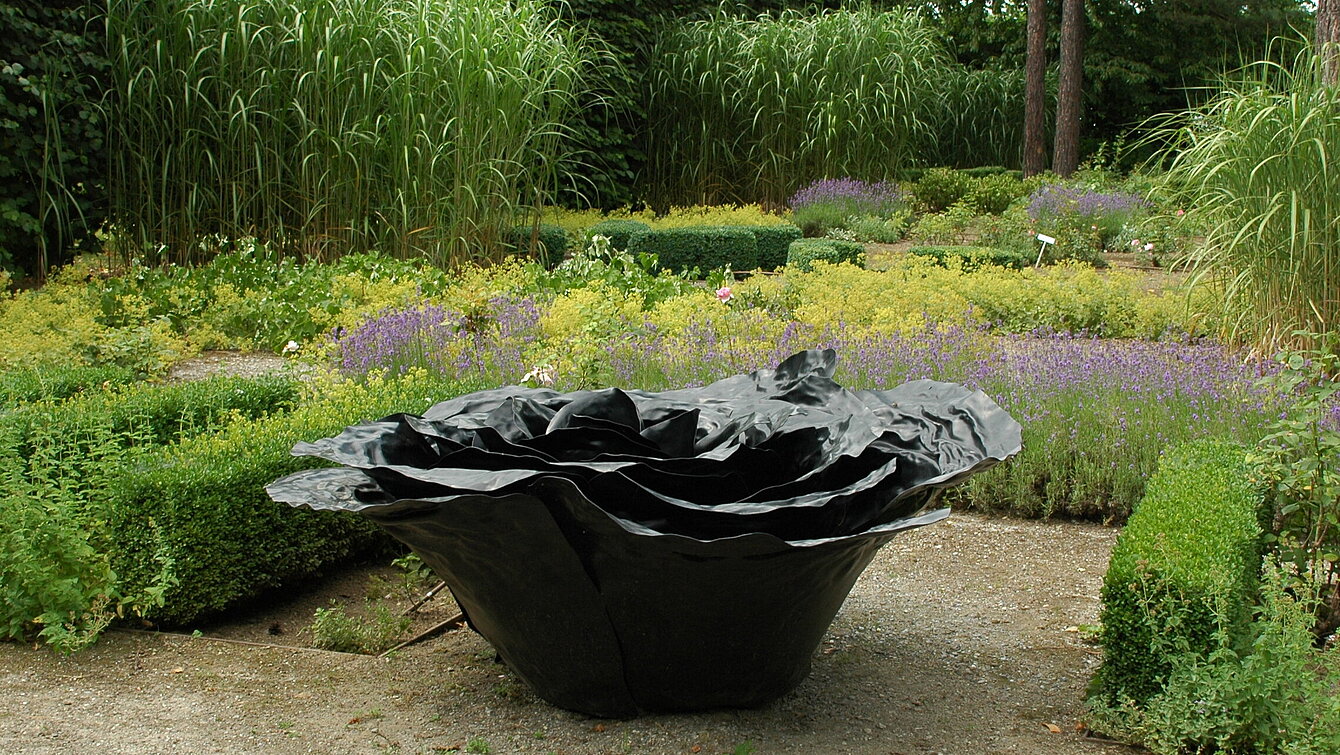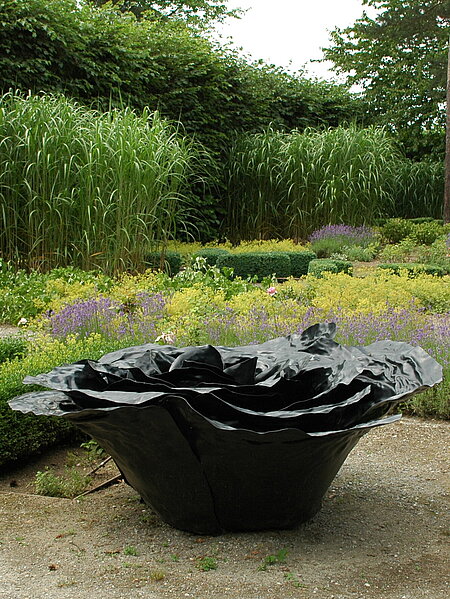In Molacek’s oversized aluminium sculptures, the rose blossom receives an elite treatment. His roses are produced in four different colours and are installed in public areas, parks and gardens. The black Rose here in the cottage garden unfurls its effect in interaction with the nature around it, which is constantly changing. Molacek is not concerned with depicting the natural beauty of a flower as a landscape painter might do. Instead, he wants to show something fragile and delicate with an exaggerated clarity and at a larger-than-life scale, as if it were a superstar in the media world.
Rose
Rudi Molacek, 1999


Image Credits
Author
Christa Steinle
Location on map
Position 35
Owner
Universalmuseum Joanneum
Artist biography
Rudi Molacek
Show all
About the sculpture
Photography used to be the basic medium for Rudi Molacek’s artistic creation. In 1984 he turned to painting and used his experience as a photographer in interpreting the image as a technical system, and also in transferring it to the panel. He started to experiment with carrier materials and techniques, contrasting oil painting with computer painting or serigraphy.
He submits the classic motif of the flower – mainly the rose – to various aesthetical procedures. For him, the rose is the symbol of popular culture par excellence: a symbol of democratisation, covering a wide emotional range. Thus with plastic tulips in a serial arrangement, he composes a flowerbed or develops floral carpets, tablecloths or glass tables using schematic rose serigraphy.
The rose blossom receives an elitist treatment in his alloy sculptures, which come in all colours – pink, yellow, green, blue, black, white etc. – and are placed in the public space, in parks and gardens. The black rose is located in the Skulpturenpark, where she unfolds her aura against nature in the form of a gigantic ground sculpture.
The motif of the rose was derived from the world of technical media and will be transferred to the three-dimensional character of a sculpture, thus again finding her place in nature. Molacek does not perceive himself as a flower painter or landscape designer. His points of reference are the New York scene pop artists stretching from Andy Warhol, to Jasper Johns and Claes Oldenburg, whose superlative explicitness in their works gave otherwise negligible objects an icon-like status.
Thus Molacek also conventionalises the open rose blossom as a monumental emblem, in order to alienate but also to effectively highlight its aesthetical attraction in the material and supra-dimensionality.



















